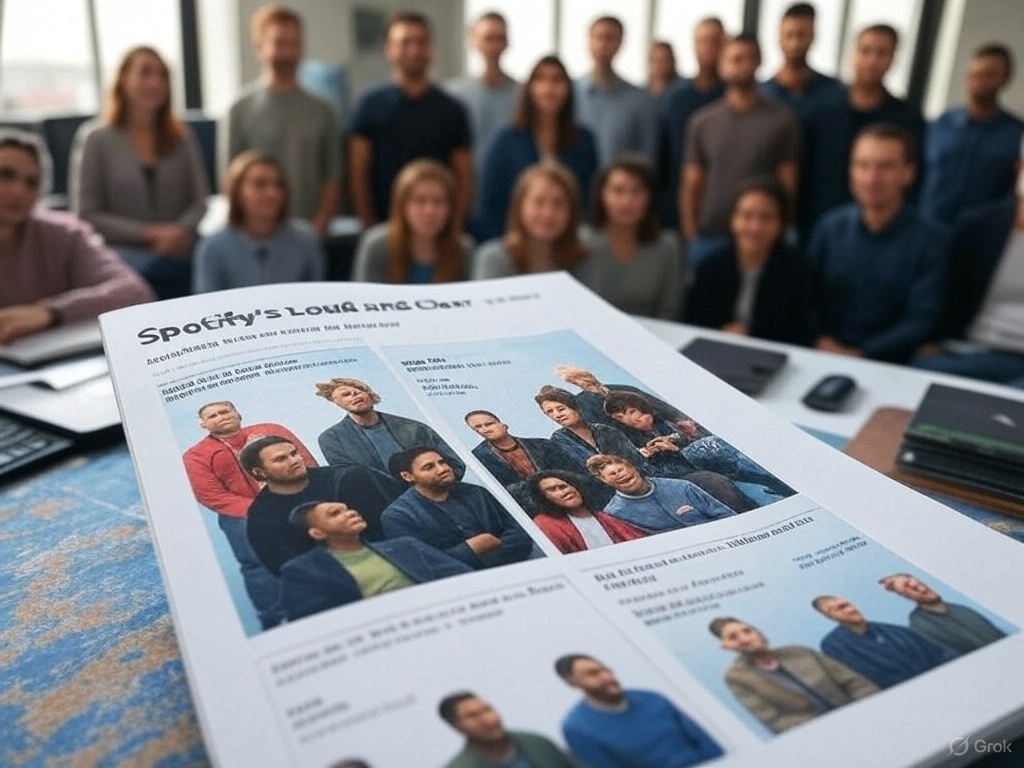Spotify’s 2024 Loud and Clear report paints an optimistic picture of the music streaming industry, trumpeting $10 billion in royalty payouts to artists and rights holders.
 The platform highlights significant growth in artist earnings over the past decade. According to the report, musicians now earn over $10,000 per million streams—ten times more than in 2014. The number of artists earning $5 million annually has surged from a handful of superstars a decade ago to over 200 today.
The platform highlights significant growth in artist earnings over the past decade. According to the report, musicians now earn over $10,000 per million streams—ten times more than in 2014. The number of artists earning $5 million annually has surged from a handful of superstars a decade ago to over 200 today.
Even mid-tier and independent artists are seeing gains: those ranked 10,000th in popularity have boosted their income nearly fourfold, from $34,000 to $131,000, while artists at the 100,000th spot have seen their earnings rise from $600 to $6,000.
In 2024, approximately 1,500 artists earned over $1 million on Spotify, with 80% of them never cracking the global top 50.
The Loud and Clear report, an annual event for Spotify, aims to showcase transparency and progress. However, its 2024 release arrives amid mounting criticism over the platform’s royalty practices.
 A recent Billboard analysis estimates that changes to Spotify’s payout system, particularly the bundling of audiobooks with premium subscriptions, could cost songwriters $150 million annually in mechanical royalties. The backlash has been palpable—some artists even boycotted Spotify’s Grammy party earlier this year.
A recent Billboard analysis estimates that changes to Spotify’s payout system, particularly the bundling of audiobooks with premium subscriptions, could cost songwriters $150 million annually in mechanical royalties. The backlash has been palpable—some artists even boycotted Spotify’s Grammy party earlier this year.
Fueling the discontent is an independent report from Duetti, a company that purchases music rights from creators. Duetti’s data suggests Spotify pays just $3.00 per 1,000 streams, lagging behind competitors like Apple Music ($6.20), Amazon Music ($8.80), and YouTube ($4.80).
Spotify dismisses these figures, arguing that per-stream payout metrics are misleading. Instead, the platform uses a “streamshare” system, where an artist’s share of total streams determines their cut of the royalty pool. If an artist accounts for 1% of streams, they receive 1% of the payouts.
Spotify’s CEO, Daniel Ek, has shifted some of the blame to record labels and rights holders, who receive roughly two-thirds of every dollar earned from streaming. Ek argues that these entities, not Spotify, control how royalties are distributed to artists based on individual contracts. In a post on X, he emphasized that Spotify’s role is to deliver funds to rights holders, not to dictate how they’re allocated.
 Not everyone buys this explanation. The Union of Musicians and Allied Workers (UMAW) has been vocal in demanding reform, and their calls are gaining traction. In the U.S., the proposed Living Wage for Musicians Act is under consideration in Congress.
Not everyone buys this explanation. The Union of Musicians and Allied Workers (UMAW) has been vocal in demanding reform, and their calls are gaining traction. In the U.S., the proposed Living Wage for Musicians Act is under consideration in Congress.
The bill would mandate a minimum payout of one cent per stream, a move that could force the entire industry to adapt. If passed, Spotify’s current arguments about streamshare and label contracts may no longer hold water.
While artist earnings have undeniably grown since 2014, the lack of transparency in royalty distribution remains a sticking point.
Spotify’s achievements, though notable, feel hollow to many in an industry where trust is scarce. Moreover, focusing solely on per-stream payouts oversimplifies the issue.
Also read:
- Uber’s 2025 Lost & Found Index: A Wild Ride of Forgotten Treasures
- How Companies Hook Us with Rage: The Cluely Case
Such metrics fail to account for the broader ecosystem, including the potential impact of higher payouts on subscription costs. If legislation like the Living Wage for Musicians Act becomes law, consumers may face steeper fees, a consequence lawmakers seem to overlook in their push for artist-friendly policies.
The debate over streaming royalties is far from settled. Spotify’s Loud and Clear report showcases real progress, but it’s clear the industry needs more than optimistic numbers to address the growing unrest among artists and advocates. As the conversation evolves, transparency and fairness will be critical to ensuring that the streaming boom benefits everyone — not just the platforms and labels at the top.






